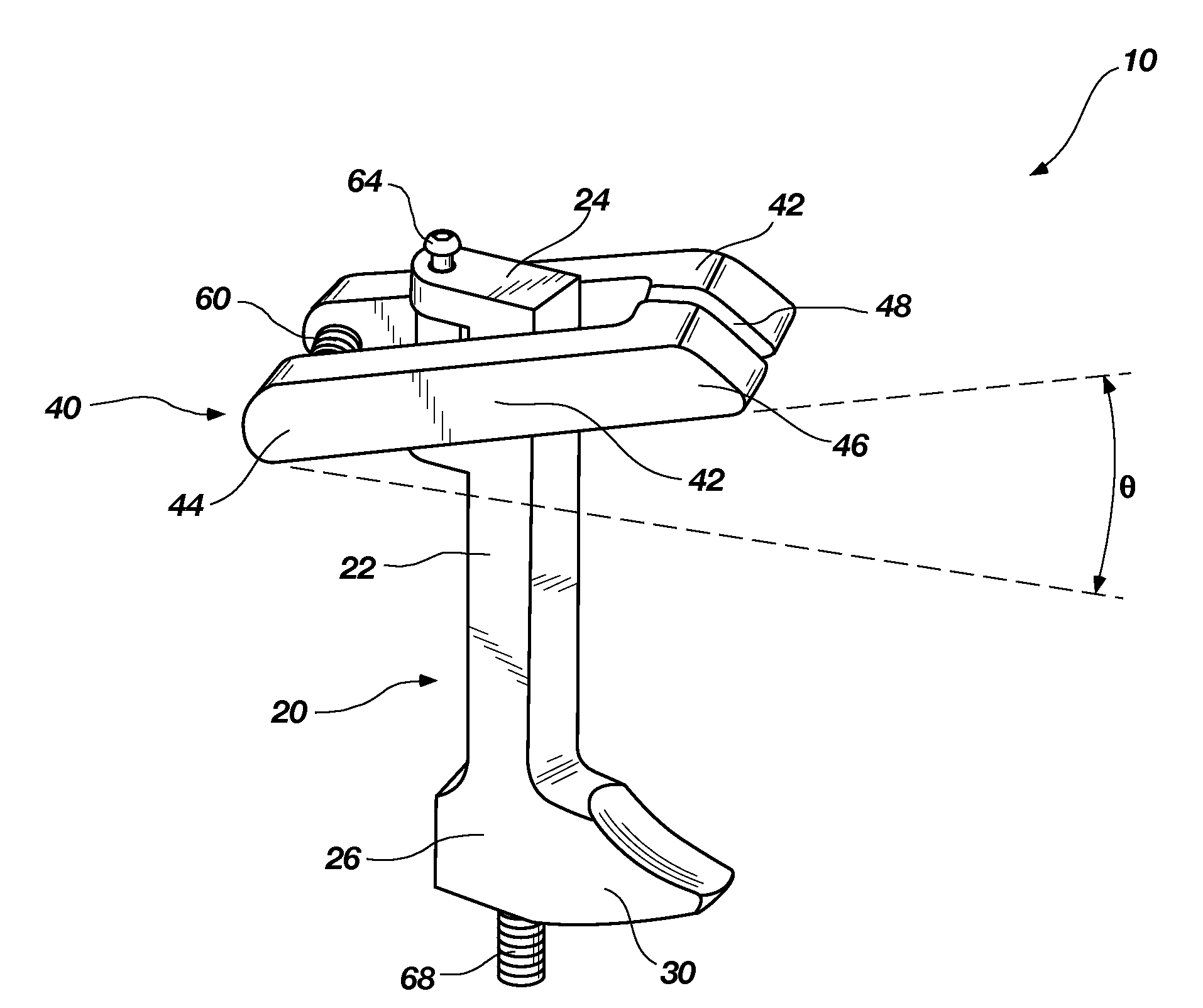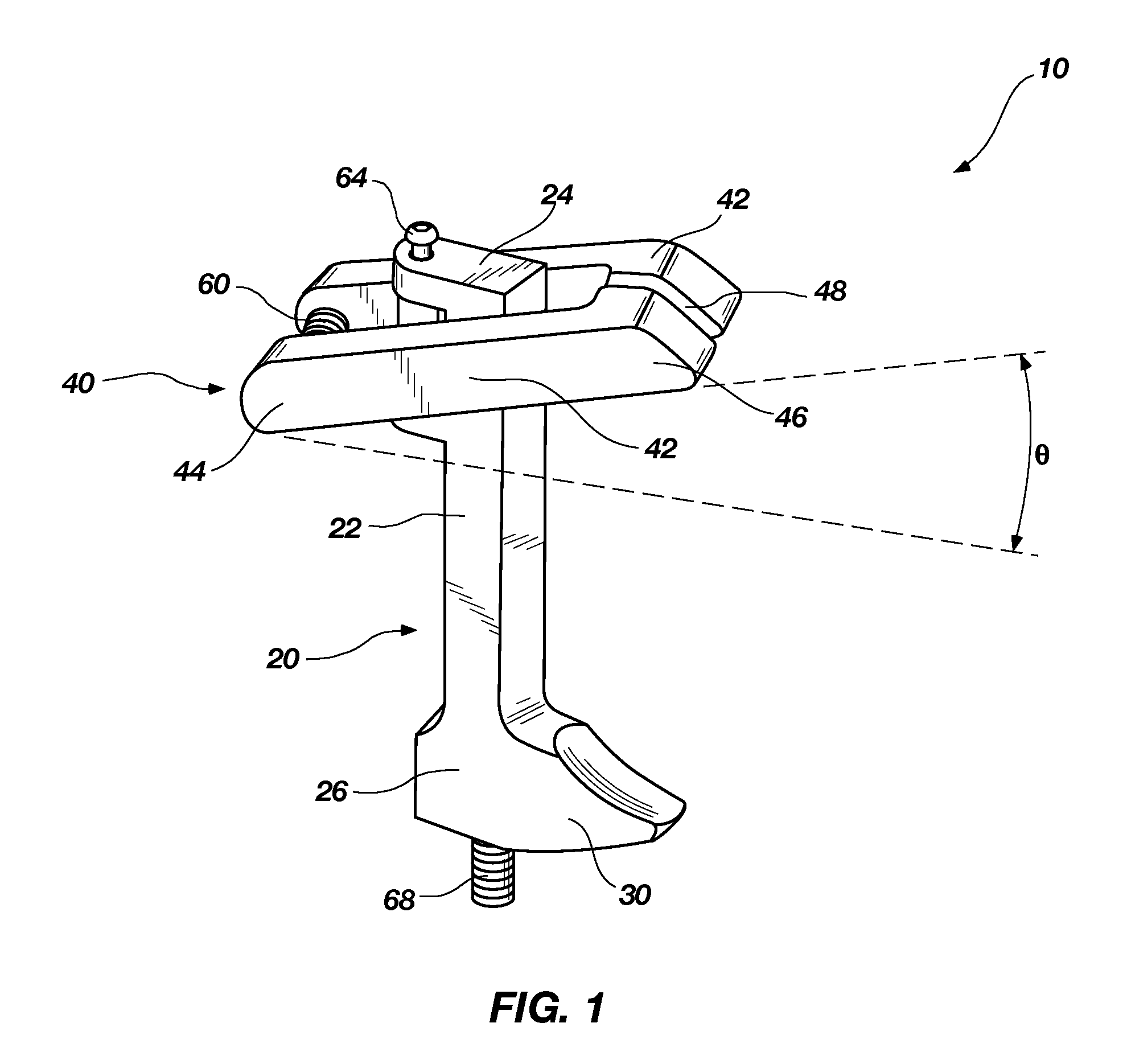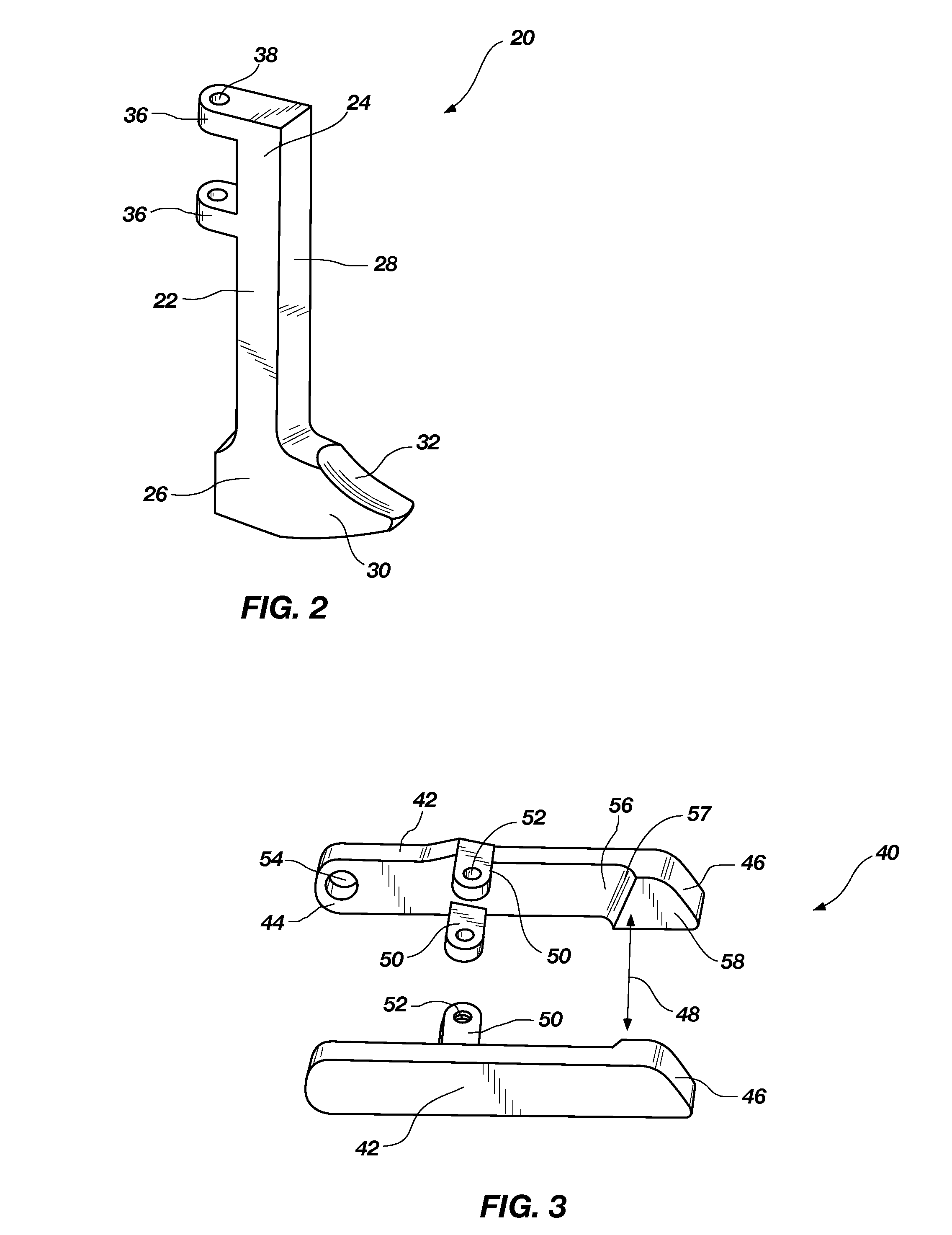Safety and rescue carabiner holder
a carabiner and safety technology, applied in the field of safety and rescue operations, can solve the problems of inability to extract workers, inability to work, and inability to work independently, and the current state of the art for carabiner holders does not meet the needs of the safety and rescue sector
- Summary
- Abstract
- Description
- Claims
- Application Information
AI Technical Summary
Benefits of technology
Problems solved by technology
Method used
Image
Examples
Embodiment Construction
[0021]Reference will now be made to the exemplary embodiment illustrated in the drawings, and specific language will be used herein to describe the same. It will nevertheless be understood that no limitation of the scope of the invention is thereby intended. Alterations and further modifications of the inventive features illustrated herein, and additional applications of the principles of the invention as illustrated herein, which would occur to one skilled in the relevant art and having possession of this disclosure, are to be considered within the scope of the invention.
[0022]FIG. 1 illustrates a safety and rescue carabiner holder 10 according to a preferred embodiment of the present invention. The carabiner holder is comprised of two principle components: an L-bracket 20, and a gripping structure 40. The L-bracket is justly named as it has a long axial stem 22 with an upper end 24 and a lower end 26, and a projecting foot 30 which extends from its lower end. The configuration of ...
PUM
 Login to View More
Login to View More Abstract
Description
Claims
Application Information
 Login to View More
Login to View More - R&D
- Intellectual Property
- Life Sciences
- Materials
- Tech Scout
- Unparalleled Data Quality
- Higher Quality Content
- 60% Fewer Hallucinations
Browse by: Latest US Patents, China's latest patents, Technical Efficacy Thesaurus, Application Domain, Technology Topic, Popular Technical Reports.
© 2025 PatSnap. All rights reserved.Legal|Privacy policy|Modern Slavery Act Transparency Statement|Sitemap|About US| Contact US: help@patsnap.com



